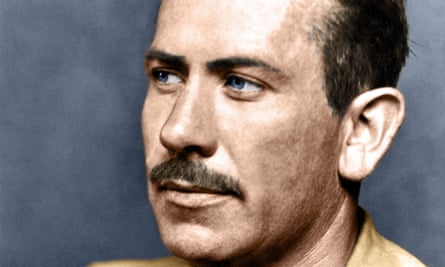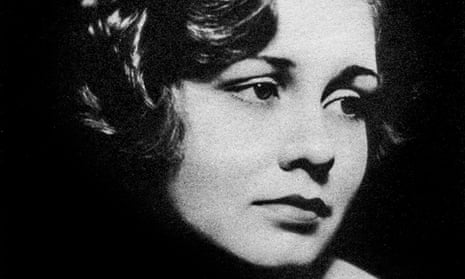John Steinbeck’s wife Gwyn Conger Steinbeck describes the author as “a sadistic man” and a serial womaniser, in a newly unearthed memoir found in Wales, which is set to be published for the first time this week.
The manuscript for My Life With John Steinbeck, by the author’s second wife and mother of his two children, has been in Montgomery, Powys ever since its ghostwriter, the British journalist Douglas Brown, died on holiday in Yorkshire in the 1990s. The manuscript was passed to Brown’s brother in Montgomery and was recently discovered by his neighbour Bruce Lawton, who is publishing it.
Brown interviewed Conger Steinbeck in the early 1970s, after she agreed to finally speak about her ex-husband, who had died in 1968, as she was in need of money. Conger Steinbeck died in 1975. Brown never published the memoir, for unknown reasons.
My Life With John Steinbeck recalls a troubled marriage that spanned 1943 to 1948, a period in which he would write classics including Cannery Row and The Pearl. During their marriage, Conger Steinbeck described a husband who was emotionally distant and demanding. “Like so many writers, he had several lives, and in each he was spoilt, and in each he felt he was king,” she wrote. “From the time John awoke to the time he went to bed, I had to be his slave.”

Conger Steinbeck first met the author as a nightclub singer in 1938, when he was married to his first wife, Carol Henning. In 1941, Conger Steinbeck alleges that the author sat her down with Henning and told them both: “Whichever of you ladies needs me the most and wants me the most, then that’s the woman I’m going to have.”
Describing their wedding night, Conger Steinbeck recalls one “Lady M” ringing their bedroom and speaking to the author for more than an hour on the phone. Conger Steinbeck alludes to Lady M being his mistress, writing that the pair had a “matinee about three times a week”.
By her account, Steinbeck rarely showed affection to her or their two sons, Thomas and John Jr, and had never wanted any children. When she was experiencing problems during her pregnancy with John Jr, Steinbeck told her that she had “complicated” his life during a busy period of writing. When John Jr arrived prematurely in 1946, she recalls Steinbeck telling her: “I wish to Christ he’d die, he’s taking up too much of your fucking time.” She identifies the conversation as “the moment when love died”.
“He never cried for me. He never cried for his sons. He never cried for anybody. But he cried for a rat called Burgess,” she wrote. “John was a sadistic man, of many emotions, but being sadistic was one of his unattractive qualities. He would let people in and set Burgess loose and gain a great sense of enjoyment, watching people scream and pull up their legs.”
Lawton said the book was not intended to damage Steinbeck’s legacy. “It was a question of fairness,” he told the Guardian. “As soon as I saw it, I thought, ‘Wow, this is obviously of fair significance.’ I realised Gwyn had been airbrushed out of Steinbeck history. He traded the first wife in for the younger one – Gwyn – but he was so nasty to her that she kicked him out and so he married the third, Elaine. She published a book [Steinbeck: A Life in Letters], so I thought it was only fair that this be published too.”
After their divorce, Conger Steinbeck would remain a presence in his life: Steinbeck claimed his ex-wife was the inspiration for Cathy Ames, the murderous and conniving antagonist in his 1952 novel East of Eden, who he described as a “psychic monster” with a “malformed soul”.
Jay Parini, who wrote a biography of Steinbeck in 1994, describes the memoir in a foreword as “a genuinely significant literary discovery”.
“I found it impossible to get a good take on Gwyn,” he writes. “Obviously, Steinbeck was wildly attracted to her: she was beautiful, tall and willowy. But as she had passed away, it was impossible to know how she really felt about her famous husband and what that marriage was really like.”
Lawton said: “He was pretty awful to Gwyn, but she was probably also pretty awful to him – after all, this is her side of the story.
“She was probably a little foolish to get involved with him – but then again, he did pursue her.”
